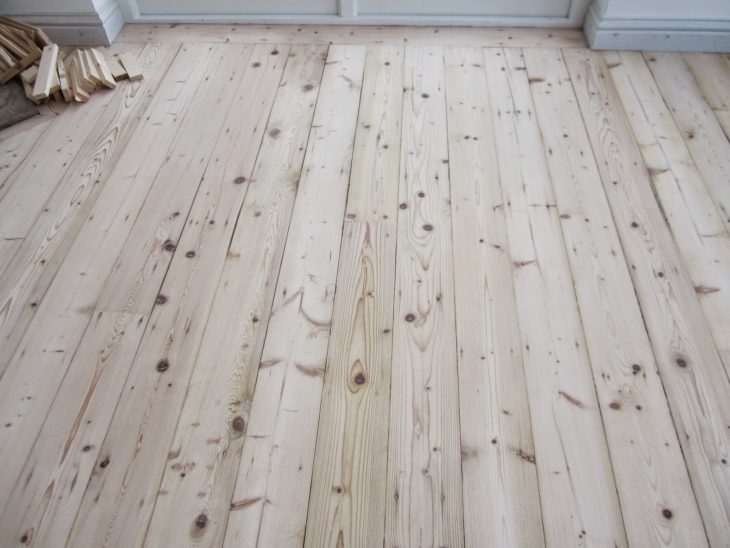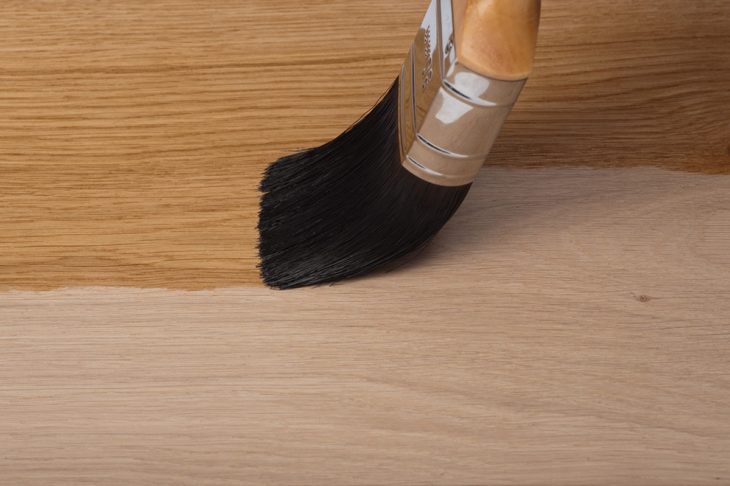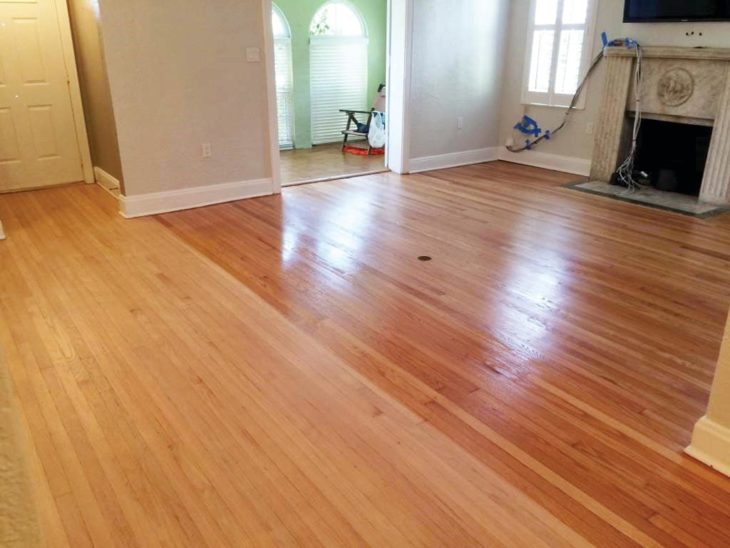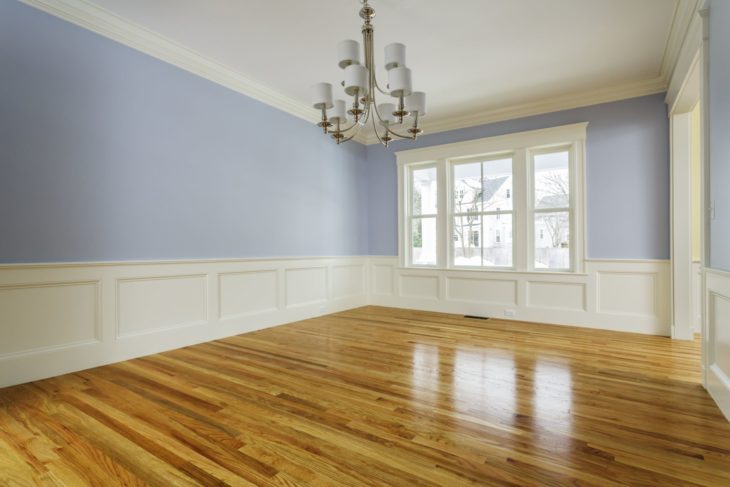Wood floors should not be neglected or untreated. The wooden floors need proper sanding and coats of anti-bacterial solutions to increase the longevity of wood flooring. Experts opt for the best 5 wood flooring treatments. Your floors must not have the yellowish patches, and signs of dents. Proper flooring treatments save wood floors from various bacterial infections and damages. You can find custom floor sanding, hardwood floor removal, and regular floor maintenance.
Experts of this wood flooring treatment company guide newcomers to select the best floor sanding/grinding package before complete paintwork. Here are some suggestions on how to decorate wood floors and for help, we asked professionals from gluvkanonen.dk
Contents
Wood Lye

Source: Soaps and Roses
The natural color of the wooden floor is kept longer if you apply the lye coating with a fresh nylon brush to treat any type of wood floor. Before using this wood lye, experts like to do the perfect wood sanding and drying. To have the best result, choose qualitative lye and take a paint roller for floor treatment.1 liter lye is needed per 100 square feet. Wood resilience and durability must be enhanced. Remember, there will not be any dirt or yellow mark on the wood floor. Therefore, remove the signs of dirty elements and patches with a wood cleaner.
Hardwood Finish Options

Source: Stair Parts Online
While taking care of your hardwood floor, you need a few essential materials for floor treatment or hire professionals from newjerseyhardwood.com. For instance, the manufacturer applies aluminum oxide crystals with an anti UV urethane coat to the pre-finished hardwood planks. This is an excellent wood sealing component. The hardwood floors become youthful and durable to last for many decades. This protects the hardware or immune system of the wood floor. This extra layer of pre-finished hardwood floor must prevent the attacks of lethal germs /bacteria or weather roughness.
Oil-based Hardwood Treatment

Source: Angie’s List
Modern hardwood flooring treatment prioritizes the oil-based acrylic urethane substance. It is a hassle-free technique for you to polish the wood floor top to bottom. The oil-based solution gets completely dried up within 12 hours.
Water-Based Hardwood Flooring Treatment

Source: Valenti Flooring
The non-toxic water-based urethane pack is more workable because of the low off-gassing issue. Unlike the oil-dependent solution, this water-based urethane mixture doesn’t produce a harmful odor. Therefore, it is eco-friendly and safe. It also contains all biodegradable elements with the least VOC components. So, the hardwood floor treatment is successful without damaging the ambiance and health of the people.
Which is better: Water-based or Oil-based polyurethane?
Have you ever wondered what the differences are between water-based polyurethane and oil-based polyurethane? While the two are both used on hardwood floors, they do share some differences in terms of finishes, drying times, and other characteristics.
If you would like to learn more about water-based polyurethane and oil-based polyurethane and which one is better for you, then keep on reading.
Advantages and Disadvantages of Water-Based Polyurethane
Water-based polyurethane, in comparison to oil-based polyurethane, has its own advantages and disadvantages. Some of its advantages include:
- Water-based poly can help provide a clear finish with very minimal odor. This is true especially since oil-based polyurethane is known to be particularly pungent.
- Water-based poly can dry much fast than oil-based polyurethane. In fact, most water-based jobs can be accomplished within a few hours, and multiple coats may be applied throughout the day.
- Water-based poly is known to be more environmentally friendly. This is because it contains lower levels of Volatile Organic Compounds (VOCs) than does oil-based polyurethane.
However, aside from its own advantages, making use of water-based polyurethane also has its own disadvantages.
Here is a couple of them:
- Since they give a clear finish, it won’t give your wood a rich glow like oil-based polyurethane can. However, this depends of course on your preference and whether or not you see this as a disadvantage.
- Some water-based poly is so clear that you may have to make each finish swath as you go.
- Majority of poly consists of only 30 to 35 percent solids. On the other hand, oil-based polyurethane is comprised of 45 to 50 percent solids.
- If you choose to apply water-based poly to your floors, you may need to apply a couple of new coasts every two years.
Advantages and Disadvantages of Oil-Based Polyurethane
Like water-based polyurethane, oil-based urethane has its own advantages and disadvantages. Here are some of its advantages:
- Oil-based poly can last longer than water-based polyurethane. In fact, this durability is almost indisputable. Since water-based polyurethane contains fewer VOCs, it cannot last as long. This is also because water-based polyurethane is thinner and often needs multiple coats (around 4-5) to have the durability of 3 coats of oil-based polyurethane.
- Oil-based poly is more affordable than water-based polyurethane. Water-based polyurethane can cost twice as much as oil-based polyurethane (or 10-25% more).
- Oil-based poly requires less maintenance over time compared to water-based poly which needs additional coats every so often.
- Oil-based poly has a more in-depth finish. It provides a fuller color and finishes compared to water-based poly, which can often have a duller color and finish.
Likewise, here are some of the disadvantages that come with oil-based polyurethane.
- Oil-based poly has a very pungent smell that also emits a very strong chemical odor and noxious fumes, especially during the drying process. As such, you will need to wear a respirator or protection when applying oil-based polyurethane because even your clothes can stink up for hours!
- Oil-based poly can take a long time to dry. You would have to wait around 5 hours in between coats and 12 hours for the last coat to dry over the next few days.
So how do you determine which type of polyurethane is best? Well, this all depends on your preference, budget, and desired aesthetic. If you are looking for a quick and easy solution for your hardwood floors, pick water-based polyurethane.
However, if you are looking for a more refined solution for your hardwood floors, then pick oil-based polyurethane.
Stains and Hardwood Bleaching

Source: The Spruce
After grinding and sanding the wooden blocks of the floor, it requires you to use top stains for coloring the different layers of the hardwood floor. It beautifies the floors when you do proper floor coating with different stains. Select the darker or much lighter stains to enhance the glossiness of hardwood floors. At the same time, bleaching is also included in the hardwood treatment for producing a more natural glow of the hardwood floor. It resists foreign elements to be clogged to the hardwood for destruction. Hardwood bleaching improves the elegance of the wood floor.
Finally, some people also depend on other flooring techniques like floor distressing and wood inlays. However, economical people can try these top five methods to recover the lost potentiality and glamour of the expensive wood floor. Eventually, the floors need to be leveled through the sanding prior to have a switch to the basic flooring treatments including wood staining, bleaching, and water-based painting for wood floor transformation.
